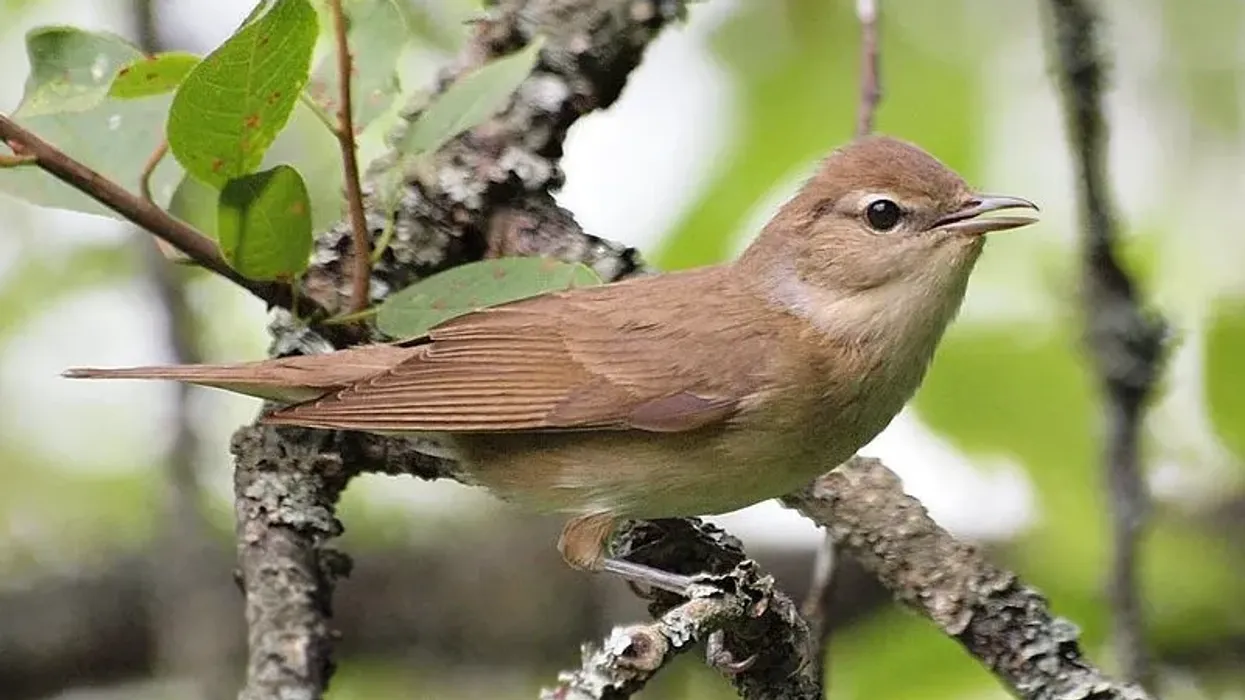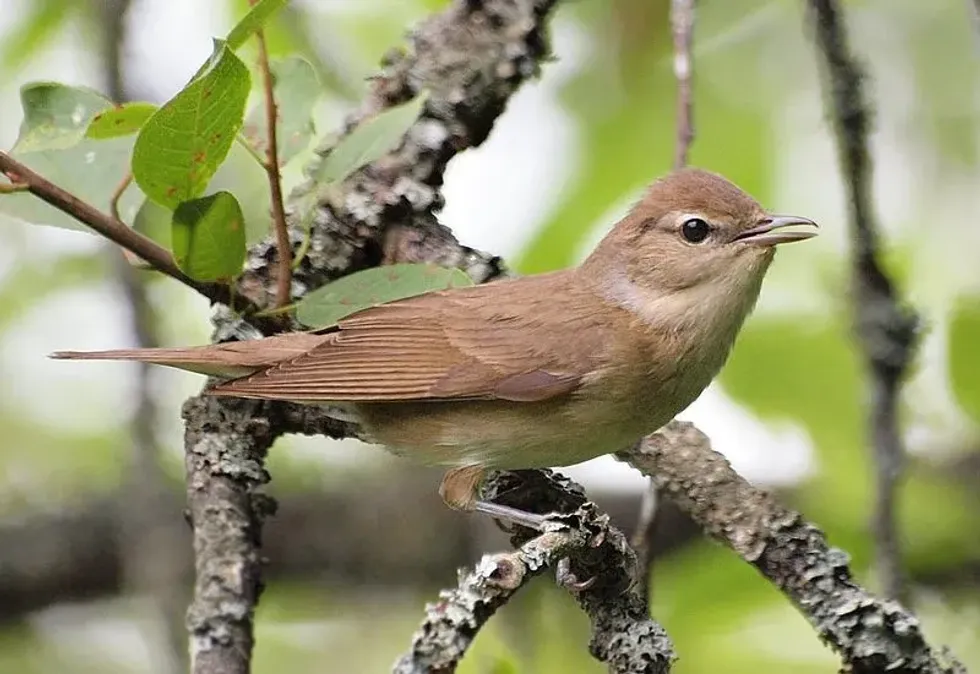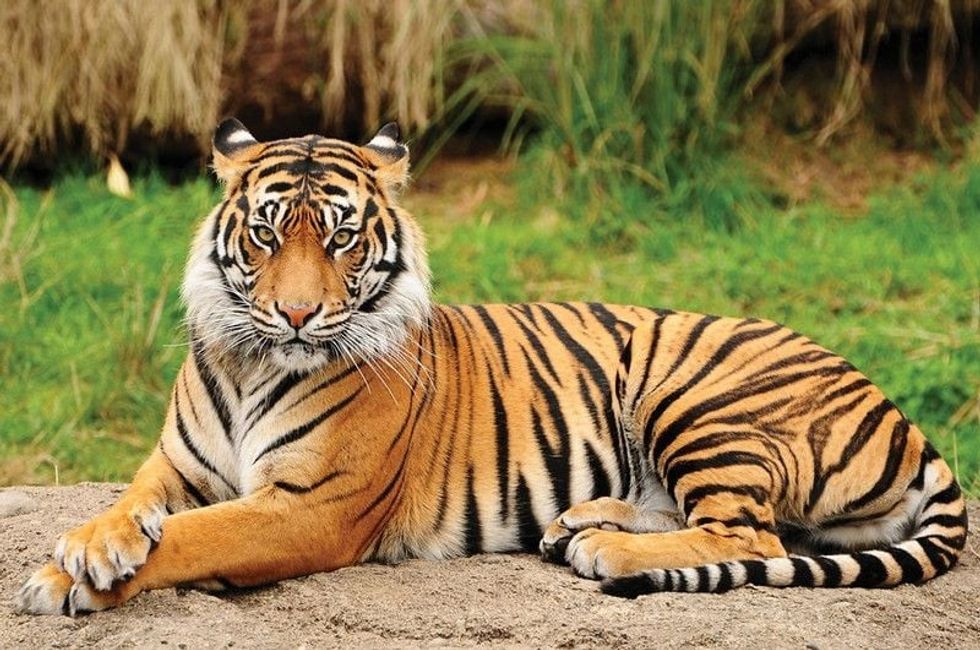Garden warblers, Sylvia borin, are summer migrants from wintering in Africa. This species of bird inhabits a range of wooded habitats.
Garden warblers, Sylvia borin, are pleasant to be around. This species of bird is pale and light yellow with a hint of pale texture around the eyes, gray on the side of the neck, and a relatively stubby bill. They have a gray tone at the top parts and are white and brown towards the lower part.
Their body features a stocky body shape, short, sturdy, and sticky, making them different from the rest of the warblers. Their beak is gray as well as their low mandible, and they have dark brown irises.
They spend a lot of time hovering and flocking on bushes and trees and therefore are less visible than their other warblers. They sing beautifully like blackcaps but have longer and more mellow phrases.
During autumn, Sylvia borins are visible in mixed woodland and woodland edges. They also are seen on glades and open area rides. They love to inhabit coppiced woodland and farmland hedgerows.
As common migrants, they inhabit areas of England, western Wales, and South Scotland, especially during autumn. These birds have a total lifespan of around two years, which can be more or less depending on their lifestyle and diet.
You can also learn more interesting facts about other birds species such as the Rufous hummingbird and great frigatebird.
Sylvia Borin Interesting Facts
What type of animal is a Sylvia borin?
The garden warbler is a type of bird.
What class of animal does a Sylvia borin belong to?
Sylvia borin belongs to the Aves class of animal and avian genus Sylvia. They are present across the globe and being migratory birds from European countries. They migrate to other regions to escape winter.
How many Sylvia borins are there in the world?
It is unknown as to how many Sylvia borins there are in the world.
Where does a Sylvia borin live?
Sylvia borin prefers group migration from north, south, and central Europe. They have also been observed to stay alone, but mostly they prefer to stay in groups or in pairs during the mating season.
What is Sylvia Borin's habitat?
They migrate from the northern part of Europe to the south to escape winters and come back in spring. Garden warblers breed in mixed woodlands throughout Finland. They prefer group migration from north, south, central Europe.
Who does a Sylvia borin live with?
Garden warblers live in flocks in woodlands.
How long does a Sylvia borin live?
A garden warbler has a total lifespan of around two years.
How do they reproduce?
Garden warblers, Sylvia borin, make nests in low bushes or grassy vegetation which is less than a meter above the ground. Warblers usually build a large nest made of foliage, dried plants, twigs, stems, hair, and root fibers which are piled together.
It does not use a spider’s web, unlike the rest, to bind the nest. Males build many nests as options to choose from during courtship for the female.
Garden warblers prefer dense deciduous woodland with good undergrowth to build their nests in. They also breed in larger parks and gardens. They are unobtrusive and not easily noticed unless they are singing.
The majority of the population is in the midlands and north. After mating season, this species lay about four to five eggs around May and June.
Eggs are incubated by both parents for 11–12 days. Fledglings remain in the nest for 9-11 days as a family group.
What is their conservation status?
Garden warblers are found across Asia, Europe, and Africa due to migration. Their conservation status is of Least Concern as they have a stable population.
Sylvia Borin Fun Facts
What does a Sylvia borin look like?

Garden Warbler Sylvia borin species s. Garden Warbler Sylvia borin birds are pleasant and tend to be less emphatic. This species of bird is pale and brown with a hint of pale texture around the eyes, gray on the side of the neck, and a relatively stubby bill.
The Sylvia borin has a gray tone at the top parts and white brown towards the lower part.
Their body shape is the stocky body shape, short, sturdy, and sticky that makes them different from the rest of the warblers. Their beak is gray with their low mandible as gray and has dark brown irises.
How cute are they?
Garden warblers are cute and adorable migratory birds. They are small in size and friendly in nature.
How do they communicate?
Garden warblers make warbler's sounds and calls. Songs sung by males consists of rich, melodious music-like sound, which can last for longer periods. The song can be confused with that of the blackcap due to its sound similarities.
However, they have a slightly lower-pitched compared to the blackcap species. But, their muted version of the song, along with their quiet subsong, makes it difficult to separate their sounds.
They make common or frequent, sharp calls of 'kek kek,' which are repeated rapidly when the bird is alarmed. A quiet rasping churrs resembling the main call is also sometimes heard. The juvenile has a quit alarm vocalization.
How big is a Sylvia borin?
Garden warblers have a total body length of around 5.5 in (14 cm), which is four times bigger than brown-headed nuthatch.
How fast can a Sylvia borin fly?
They do not fly fast as they are small in size. However, they are strong and fast enough to migrate. It is believed that they may have a similar flight speed as that of the sparrow.
How much does a Sylvia borin weigh?
Garden Warbler Sylvia borin species weigh around 0.5-0.7 oz (14.1-19.8 g). They weigh lighter and smaller than a hummingbird.
What are the male and female names of the species?
They have no sex-specific names.
What would you call a baby Sylvia borin?
The juveniles of garden warbler Sylvia borin are called chicks. They are small and cute.
What do they eat?
Garden warblers are omnivores that feed on insects, foliage, berries. In the African region, warblers feed on insects as well as berries, and fruits of the introduced Spanish flag is among their favorite food.
Before the northward migration, an increase in their body mass has been observed, where birds have been fattening and seemingly healthy even more rapidly, prior to their journey to the southward. Most organs like the liver, spleen, intestines, kidneys, and heart, and the flight muscles lose weight during the journey over the Sahara.
These birds have also been seen feeding on fruits with other fruit-eating passerines. Mulberries have been their utmost fruit preference in the wild.
Are they dangerous?
Garden warblers, Sylvia borin, are not dangerous. Instead, they are friendly and quite adorable.
Would they make a good pet?
Garden warblers would make a good pet. They are friendly and easy to associate with. However, their short lifespan may be a disadvantage for those people who get attached to their pets.
Did you know...
Garden warblers are shy birds, skulking around in shrubs and bushes. If you can't get a good view, listen out for their warbler sound and warbler song. It is similar to the blackcaps but more mellow and longer.
Does Sylvia borin migrate?
Their migration pattern is from the north of Europe to the south of Europe and Africa to escape winters. Their distribution is across the continents because of their migration.
How many eggs does Sylvia borin lay?
Garden warblers lay three to seven eggs in one breeding season. Their nest is large and made of foliage, dried plant, twigs, stems, hair, and root fibers which is piled together.
It does not use a spider’s web, unlike the rest, to bind the nest. During nesting, they prefer dense deciduous woodland with good undergrowth. They also breed in larger parks and gardens.
They are unobtrusive and not easily noticed unless they are singing. The majority of the population is in the midlands and north. During breeding, this species lay a number of eggs, around three to six eggs which are around May and June.
These eggs are incubated by both adults as parents for 11–12 days. Fledglings remain in the nest for 9-11 days as a family group.
Here at Kidadl, we have carefully created lots of interesting family-friendly animal facts for everyone to discover! For more relatable content, check out these green peafowl facts and hoary redpoll facts for kids.
You can even occupy yourself at home by coloring in one of our free printable Sylvia borin coloring pages.








